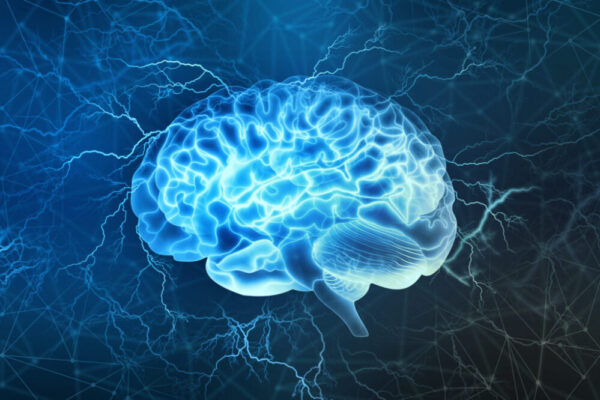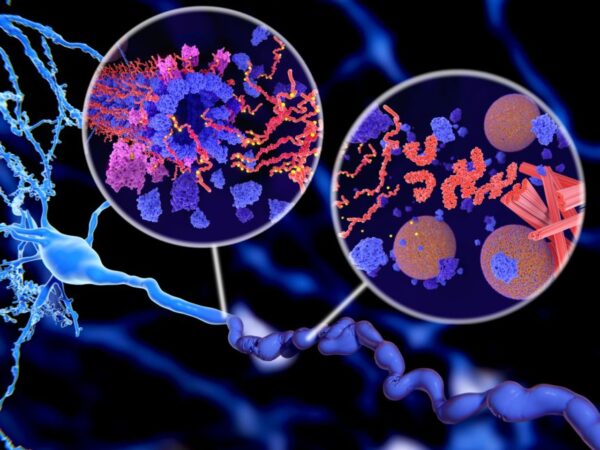The field of medical diagnostics has evolved massively over the years. In the context of biomedical, a biomarker is a measurable indicator of some biological state and is often evaluated using urine, blood, or soft tissues. The primary investigation of biomarkers is done to examine biological processes, pathogenic processes, or pharmacologic responses to therapeutic intervention. In the field of medical diagnostics, biomarkers that indicate the presence of a disease or dysfunction are becoming increasingly important in confirming the diagnosis and aiding clinicians to choose the best treatment options. Neurological biomarkers are present in cerebral spinal fluid albeit they are at undetectable levels in the blood.
“According to Coherent Market Insights, neurological biomarkers market is estimated to be valued at US$ 8,979.6 million in 2023, and is expected to exhibit a CAGR of 14.7% during the forecast period (2021-2028). Rising cases of neurological and psychiatric disorders such as clinical depression, Parkinson’s disease, Autism, Alzheimer’s disease, and others are expected to drive growth of the global neurological biomarkers market during the forecast period.” Find More Industry Insights (at) https://www.coherentmarketinsights.com/

Neurological biomarkers are used to identify and monitor risk factors or disease processes associated with neurological conditions like Alzheimer’s, Parkinson’s, and Multiple sclerosis.
These neurological biomarkers can be in the form of blood cells (red and white), spinal fluid, or other non-cellular protein molecules. Recent studies have led to the identification of several new molecular markers for the assessment and diagnosis of neurological disorders.
Several applications of these markers have been developed recently to improve clinical and pre-clinical care. Both Parkinson’s and Alzheimer’s diseases have witnessed a massive increase in patients across the globe. According to the Alzheimer’s Association, in 2023, around 6.2 million people in the U.S. aged 65 years and above were living with Alzheimer’s dementia. According to the Parkinson’s Foundation, around 60,000 people in the U.S. are diagnosed with Parkinson’s disease.
Nucleic acid amplification systems (NAAS) and DNA probes based on sequencing data from living tissues were first developed for non-neurodegenerative diseases. Neurological biomarkers for these diseases were first validated by testing human plasma samples.
Biomarkers for brain function were tested across multiple genes and across multiple cell types. Based on these initial findings, the market was studied across multiple genetic bases and across multiple cell types. In later studies, nucleic acid amplification systems (NAAS) and DNA probes based on RNA sequencing data were validated to monitor protein-based proteins. In recent years, nucleic acid amplification systems and DNA probes based on RNA sequencing data have also been tested to monitor transcription factors and neuronal cells.

Alzheimer’s disease and Parkinson’s disease are two of the most common forms of genetic disorders affecting people today. The first challenge for researchers in the neurological biomarkers and personalized medicine arena is to find out the dynamics of these disorders, and how they interact with one another in order to provide an effective therapeutic intervention. While there are currently clinical trials being conducted to test the effect of gene therapy in patients with Alzheimer’s, there is no current treatment for Parkinson’s, and the progress of the disease is still unknown.
There is an abundance of potential candidates for neurological biomarkers in Alzheimer’s disease. The first candidate is lipid markers including triglycerides, low-density lipoproteins (LDLs), high-density lipoproteins (HDLs), and also to some extent total cholesterol level. In Alzheimer’s disease, lipid dysregulation appears to be one of the early pathological phases. Another candidate for a biomarker in Alzheimer’s disease is neurotransmitters like acetylcholine receptors in the hippocampus and amygdala that control synaptic activity in the nerve system. It is known that in Alzheimer’s disease, cholinergic neurons are targeted by amyloid protein plaques and neurofibrillary tangles.

There are several candidates for using non-human genetic resources in neurological biomarkers of Alzheimer’s disease, with the most exciting one from the Google Scholar database. This is a prospective association between gender and the risk of Alzheimer’s disease. Google Scholars has recently launched a project called Brain Resources Exchange (BRX) that brings together internet scientists and neuropathologists from around the world. The goal is to identify potential neurological biomarkers of Alzheimer’s disease that can help lead to improved treatments.
Neurotransmitter markers of Parkinsonism The study from Google scholar looked at two Alzheimer’s disease regions of interest namely the substantia nigra and the putamen. The regions of interest are important as they both contain dopamine receptor protein transporters. These protein transporters are involved in neurotransmission. Neurotransmitter markers of Parkinsonism are important since dopamine plays an important role in motor function.

Neurological biomarkers offer numerous advantages that aid clinicians and surgeons to determine which treatment option would be appropriate for the patient. The advances in the neurological biomarkers market have led to an increased level of accuracy and precision when diagnosing patients with neurological conditions. For example, Neurocann University’s study found that the catechin polyphenols in green tea exerted a strong effect on brain blood flow. When patients with Alzheimer’s disease and Parkinson’s disease were given high doses of green tea, they showed significant improvements in both measures. Patients with schizophrenia and bipolar disorder showed similar improvements.
As science advances, the scope of the human body’s composition continues to increase, and this trend shows no signs of slowing down. A number of diseases are caused by abnormalities in the DNA of cells, and these DNA abnormalities can be measured for their level of variability. For example, the global neurological biomarkers market is estimated to reach over US$ 60 billion dollars by the year 2023. There are a number of companies in the research and development field that are currently focusing on DNA profiling to create diagnostic tools and personalized medicines. The personalized medicine movement is a part of the larger efforts to understand causes and treatments for neurological diseases.

Biomarkers that can provide personalized medicine research opportunities include those associated with genetic differences and inflammation. Since these conditions affect the development of the nervous system, they can be difficult to treat conventionally. However, if the exact drug is formulated, it can target the exact protein that the person needs to prevent or alleviate the symptoms. This type of personalized medicine research could prove to be particularly important for people suffering from neurological diseases.
As the demand for effective treatments for various neurological diseases continues to grow, and with it comes increased interest from pharmaceutical firms and biotechnology firms in the development of effective diagnostic tools. It is very likely that the global neurological biomarkers market will continue to expand, especially with the introduction of gene therapy treatments for such disorders in the future. The exciting potential applications of such tools in the future have the potential to bring hope to those who suffer from such debilitating diseases.



















